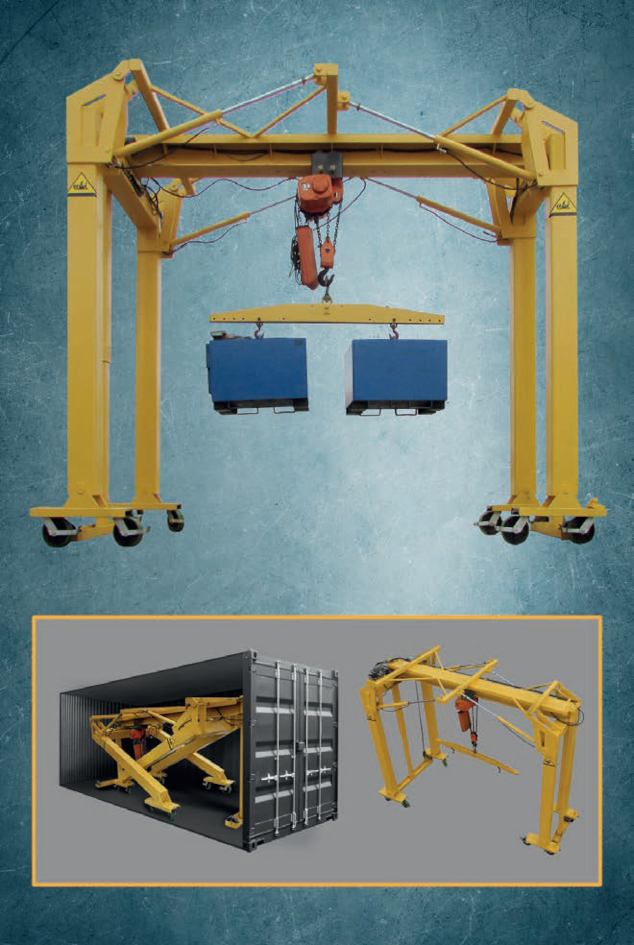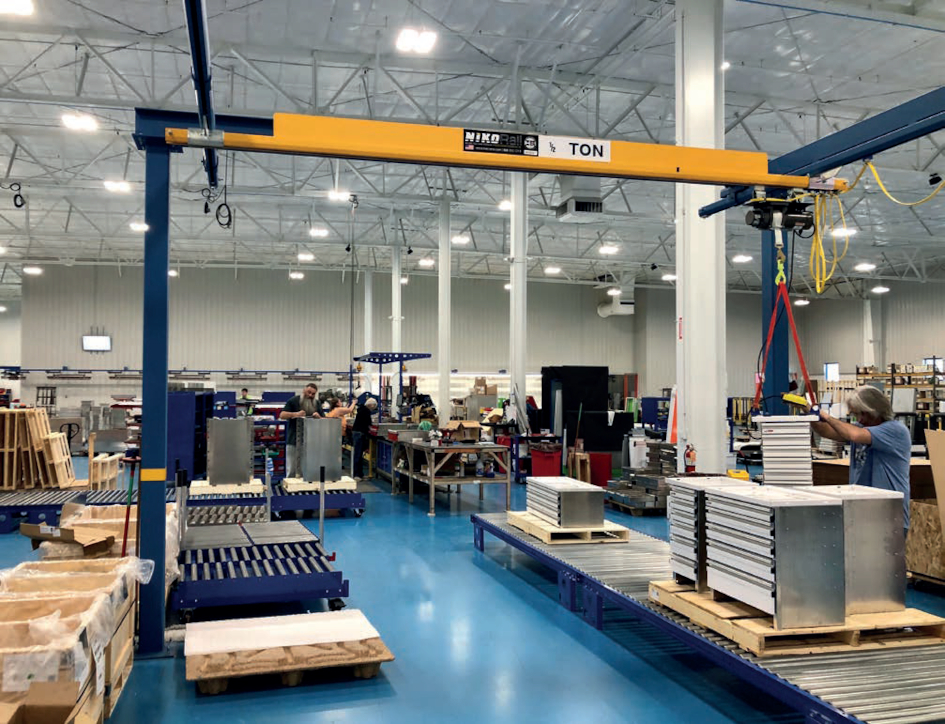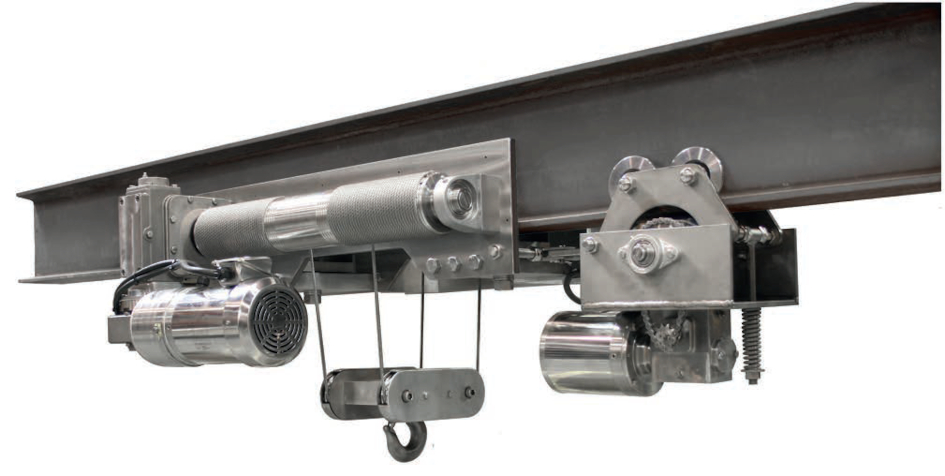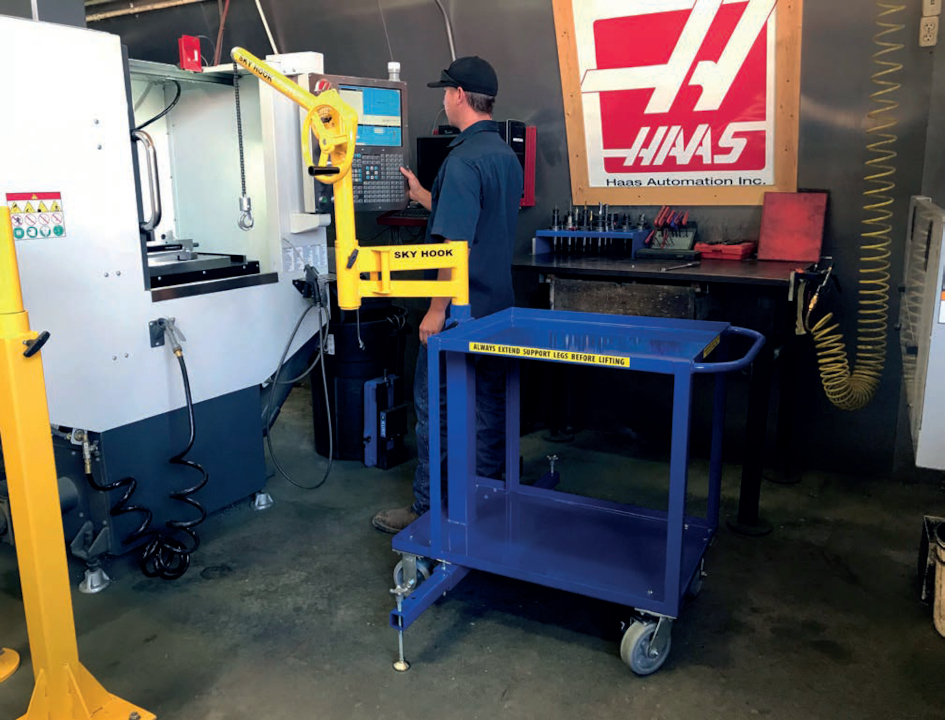It’s a steel!
10 August 2021Demand for lifting gear in the U.S has bounced back from the pandemic. Suppliers are doing their best to satisfy it, but with one or two small issues in their way. Julian Champkin reports.
Disruptive times are generally considered challenges: businesses adapt or they die. The pandemic has been nothing if not a force of disruption. What has it done to the hoist industry in America? Have manufacturers clung on by their fingertips, or have they managed to survive fairly reasonably? Or have they perhaps, in one or two cases, even flourished?
The U.S has also had, of course, a change of administration. President Joe Biden, inaugurated in January 2021, is now in the White House. Normally a new government with very different priorities, tax intentions and incentive programs would be the driving feature of any market-sentiment story at the start of a four-year term. This time round, it is more of a footnote.
The big stories at the start of the Biden years are first, the post-pandemic (or post-lockdown, at least; I am not remotely claiming that the virus has gone away) recovery – one might almost say boom - which is cheering news; and second, and linked to it, the price and availability of steel, which is not cheering at all. US and Western economies have suddenly started up again, and jumping to full demand and production from the locked-down versions is far from straightforward and involves more than flipping a switch. Issues linked to it are supply chain disruptions, which are far from over yet, and as yet another knock-on, lead times, which are also not yet back to where they were. To those you can add a shortage of labour, which some are attributing to Government Covid relief packages – now either ended or soon to end, depending on state. Given all those problems it is perhaps surprising that no-one I spoke to in the industry seemed at all depressed.
Let us start with steel. MHI is the trade association of the material handling and logistics industry. John Paxton is its CEO. “Supply chain resilience has never been more important,” he said as his opening remark of its annual Industry report for 2021. Steel is a huge part of hoist manufacturers’ supply chain, and currently it has shown almost no resilience at all. Steel has joined lumber and computer chips as textbook examples of things that the pandemic has caused shortages of.
Back in the early stages of Covid, manufacturing slowed down or stopped and steel mills shut down in response to lack of orders. But as the recovery got started, mills at first did not: production began reopening weeks or months behind demand rather than ahead of it – a worldwide effect but compounded by China where it happened first. The result is a worldwide shortage of steel; indeed, for some buyers it is in practice almost unavailable. And with the record shortage goes record prices: Spot steel is so scarce that U.S. service centres are reportedly selling at a $200 to $300 per ton premium over the spot price to secure raw materials.
Iron ore has doubled in price since the pandemic; in the nine months to April 2021 hot-rolled coil prices in the US have more than tripled. Indiana hot-rolled steel was over 1500$/t in April compared to 500$/t in mid 2020. Prices continue to rise while lead times expand.
What does this mean for people whose business it is to make hoists? Sky Hook, part of Idaho-based Attco Syclone, specialise in trolley-mounted hoists for the factory floor. Dusty White is their technical sales manager and his main current worry is shortage of steel, together with shortage of labour. “Business is still in the process of bouncing back after the pandemic,” he says “The most challenging adjustment we and many other manufacturers are currently dealing with is the lack of material. Lead times have been astronomical – and that is if you can even find the components you need and if the supplier will actually service you. Most suppliers at the moment are holding onto their stock to service their regular customers and are not accepting new clients at this time. This can be attributed to the shutdowns of many of the steel mills around the world and the lack of employees able to work. Many of our suppliers are offering substantial hiring bonuses to entice individuals to come and work for them, but are still coming up short in the personnel department.”
The pandemic actually created a potential market for Sky Hook products – and Sky Hook was itself an example of how those products allow manufacturing to continue. “Sky Hook was minimally impacted by the pandemic when it came to social distancing as our products actually allow individuals to work independently,” says White. “We had Sky Hooks already in place in our welding, machining, and painting/powder coating operations and our employees simply continued to use them ‘business as usual’ during the pandemic.” And for him, a change of administration in Washington is something he has seen many times before; each one leaves, he says, the essential heart of the lifting business unchanged: “Through our over 50 years of business, we have seen multiple presidential administrations lay out plans to decrease taxes, increase infrastructure, support small business and drive the economy. Some have been successful, others haven’t so much, but one thing has, is, and will always remain the same: heavy things need lifting! Our business has never been driven by politics, but by end users looking for an easier and safer way to accomplish lifting tasks throughout their facility.
“I wouldn’t say that demand has particularly increased or decreased in terms of type or capacity of lifting equipment; it has really just maintained itself across the board. Our most popular lifting solution is our Sky Hook lifting device on a mobile cart base with an articulating arm. It offers an overall reach of 36” (1m) and a load capacity of 250 lbs (45kg), which provide adequate lifting capacity to meet the most of our customer’s needs. The Sky Hook is a niche product geared towards lifting injury prevention. We find that most injuries occur under this 250 lb mark as these are where the awkward manual lifts or multiple user lifts take place. Typically, over these, individuals are looking for a lifting solution to perform the task.” And his customers tend to occupy the ground, of capacity and flexibility, between where manual lifting remains an option but a man-powered lifting device still gives advantages: “Our customers actually prefer the aided manual approach to lifting that our Sky Hook offers. This way, the user can move as quickly as they’d like, or as slow and as calculated as they would like. It’s the best of both worlds. The manual approach offers them confidence in operation, and eliminates the worry of holding down a button for too long and accidentally jarring sensitive and expensive components.”
Bret Lussow is director of business development of Handling Systems International (HSI) based in Chicago. He has a similar story to tell. “Business is strong and demand is high,” he says. “Projects that were on hold from last year have materialized and are now in need. The issue now is that most suppliers are busy, which is leading to longer than normal lead-times, which have been hampered by port delays as well, especially on the US West Coast for imports from Asia. And high fuel costs and huge increases in steel prices mean consumers are looking to reduce costs.”
Manufacturing, he says, was not really a problem during lockdown. “Most US manufacturers were considered ‘essential”’ and never really shut down. They just got creative with staffing.
For most manufacturers, office and support staff are also back to working at the office again.” But prices are a big, big issue, and so is labour: “Since the election we have seen unprecedented increases in raw materials,” he says. “Steel prices have nearly doubled and just about all other commodities have increased as well. Fortunately demand for products is high, but most manufacturers have had to raise prices fairly significantly to combat these material increases. We have big issues with getting workers to fill the jobs. The current administration still has Covid assistance in place for displaced workers. The problem as I and many see it is this assistance is keeping qualified workers from applying for good paying jobs.
“All our products are in demand right now. That is especially so for our NikoRail enclosed track cranes. Demand is high also for our NikoRail workstation crane.”
Here HSI has tackled its own customer lead times with determination and success. “We launched this product two years ago but are really starting to see the impact in sales with our improved manufacturing techniques reducing lead-time and our state-of-the-art quote tool , the “Quotinator”, which means the process to get quotes and drawings take only a few minutes.”
Matt Downing is sales manager of Ohio manufacturers David Round. A speciality of theirs is stainless steel hoists, which can be sterilised for food, medical and similar applications. Again, the pandemic if anything increased demand for their products: “Very many of our customers are in the pharmaceutical industry, the Pfizers and Modernas of this world,” he says; “and for that reason we were classified as a vital industry during the pandemic. So business was strong for us during that time.
We had some delivery issues: some of our suppliers had problems along the supply chain, and our own delivery lead times sometimes became a little longer.
“We had staffing issues also, and our own suppliers had their own staffing issues too; trying to get some of the components that we use to build our cranes and winches therefore became difficult. So of course deliveries were impacted. And steel prices have gone crazy high. So I wouldn’t say things are great, I wouldn’t say things are bad; overall we are holding our own.”
Vida Novak is president of Air Technical Industries, which makes custom cranes, booms and handling equipment. He echoes the point about shortages. “Overall, we have seen our industry recover from the pandemic slow-down,” he says, “but the worst effects have actually come in the past few months as activity tries to return to normal. It is the supply chain disruption and the related effects on costs that have had the most detrimental and long-lasting impact. After everything shut down last year the demand came back more quickly than expected, but we didn’t really start seeing the problematic effects of that until 2021. It seems that the extremely difficult hiring problem is one of the major sources, if not the key factor, of this lingering effect of the pandemic. That is certainly the case for us. We would be manufacturing at full capacity right now if it were not for the labour shortage.”
A major promise and priority of the Biden administration is massive investment on infrastructure. Does Novak see this as comparable to the Roosevelt ‘New Deal’ of the 1930s in getting America moving again? “Infrastructure investments are usually beneficial,” he says, “although indirectly, to our business volume. Many of the suppliers to those projects will be needing our equipment in their processes and so we’re optimistic about that.”
Throughout the pandemic Air Technical Industries has been able to work on a new product, an over-sized portable shop crane that lifts 2000lb (1t) up to 12 ft (4m) high; it launched just last month at the end of June. It builds on the company’s core products of easily-transportable hoists with small footprints and simple designs, but with increased height and capacity. “And we have seen a noticeable increase in demand for our Zero-Low Dock Lifts” he says. “This is a stationary, floor level lifting platform that is sometimes used as a loading dock when a dock bay is not available. However, we have seen customers using these for in-plant material movement as well,” he says. Digital automation, another major change, not to say step-change, in the industry (see page 31) has not quite hit his customers. “We are getting a little bit of increased demand for automation and advanced control systems, but not a huge boost,” he says. “I think there are a lot of customers just trying to improve their efficiency and safety at the moment and who are not at the point where they are thinking about going ‘all-out-automated’ yet.”
But the customers are out there, and they are wanting to buy hoists, and if the makers of hoists can only find the staff to make them, and the steel to make them with, then their main problems, it would seem, would be solved.



